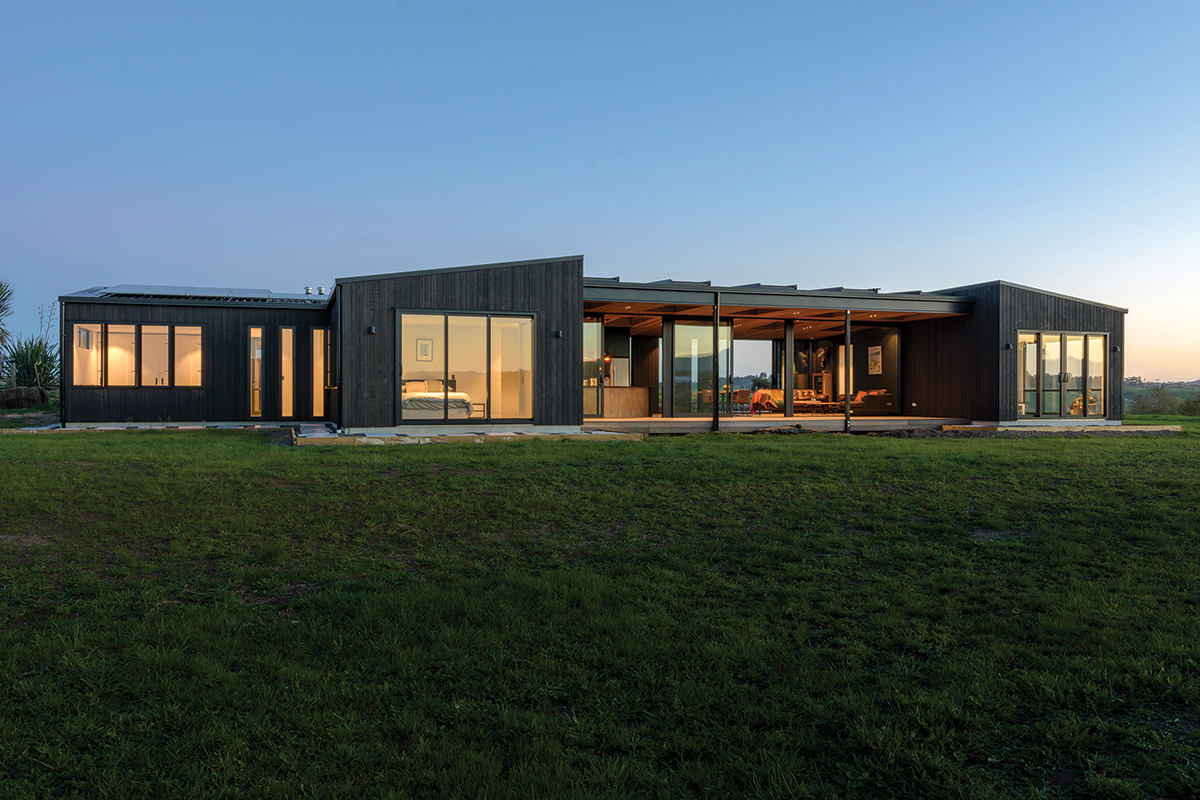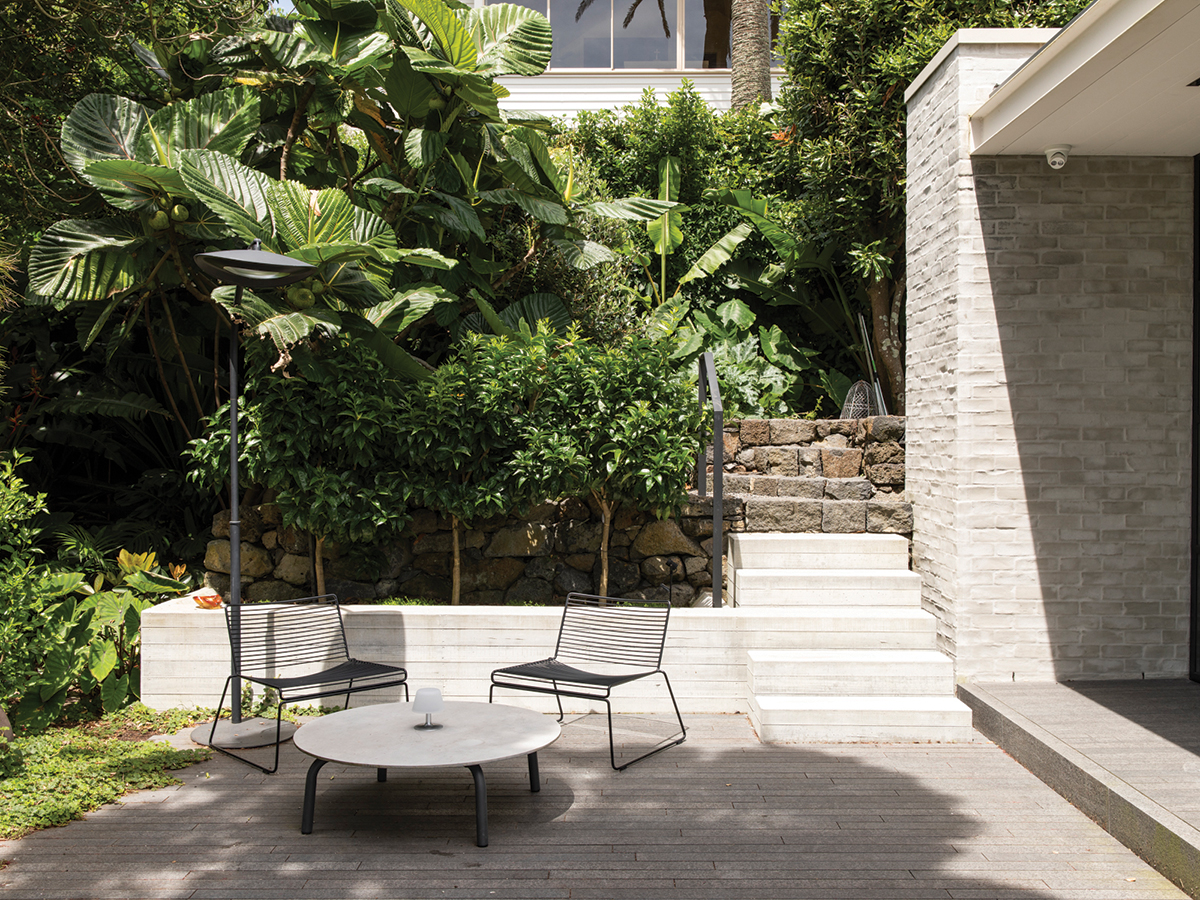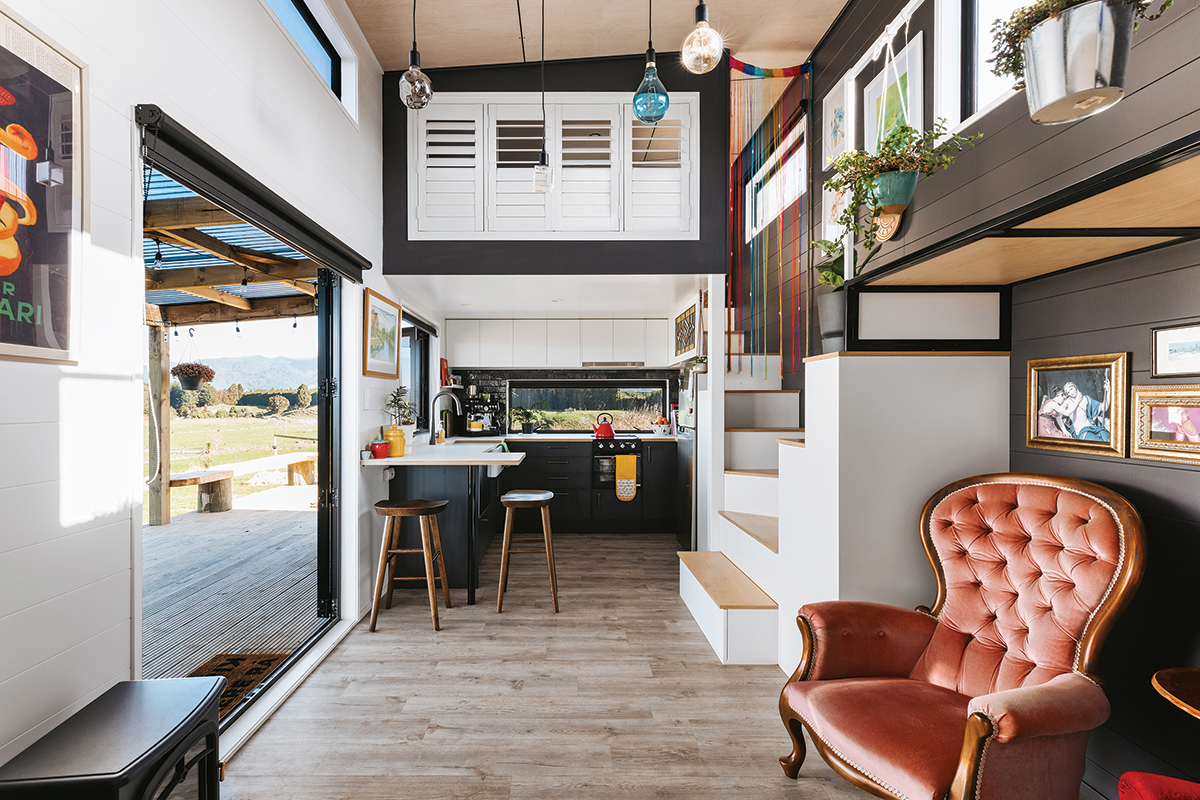“It has incredible potential as a design tool, and is obviously here to stay,” says Finn Scott, a director at Bossley Architects, the design giant behind the likes of the Maritime Museum, Auckland Waterfront Apartments, and Park Hyatt Hotel. “We have been experimenting with it over the past few months as a research tool, and for both visual and grammatical exploration. I’m constantly stunned at the rate it’s evolving.”
Dan Heyworth, founder of the studio, Box, is embracing AI with caution, concerned that in over-automating design we risk losing that “something we love about a building but can’t quite put our finger on”, that “soulful touch” that can only come from the human mind. “I hope that we will democratise architecture a lot more than we do now, that we are able to offer more people greater ability to choose from a greater selection of amazing designs,” he says. “Industrialisation and AI should be the driving force in enabling that, but it shouldn’t be the be all and end all.”
“I think great design is a combination of strong ideas and narrative,” says Finn. “A combination fuelled by the successful collaboration of a group of people passionate about what they do.”
Perhaps nowhere is collaboration more evident than at Box, a one-of-a-kind company that fuses construction and architecture together in one studio. “We call ourselves the architect builder,” continues Dan. “It’s inspired by Christoper Alexander, who recently passed away, but was an esteemed architect of urban design and an author of many fantastic books, including A Pattern Language, often studied in architecture school.”
Alexander famously believed architecture should be without ego, that it should not be considered in isolation, but built to “repair the world around it, and within it, so that the larger world at that one place becomes more coherent, and more whole…”
“He was a big proponent of architects as old master builders,” Dan goes on. “For me, the Holy Grail is going back to the old concept of pattern books. Of showing cohesion between what got built at on a street and the overall architectural language of a town or village.”
Successful architecture, says Finn, “is a result of many factors working well together”. And any project’s success, is dependent upon a talented group of people with a shared vision: “It’s not easy, so it needs to be enjoyable!”
And with that, Verve invites you to enjoy this extended design feature section as a we get to know Dan and Finn and more local leaders and freethinkers of their fields.

In the Blood
Finn’s entry into architecture was almost written in the stars. His father, being a builder of homes and boats, encouraged in him “an interest in how things went together from an early age”: “And helping build our family home as a kid I think helped solidify that interest in making things.” As well as serving as a director at Bossley, Finn has also tutored part time at the Unitec School of Architecture and Landscape Architecture.
Which architects or designers have most influenced you?
“There is so much good architecture and design out there today it is hard to single out a few designers, but for some time now I have been quite fascinated by the mid-century works of a number of South American designers such as Paulo Mendes de Rocha, Lina Bo Bardi, and Roberto Burle Marx to name a few.”
How would you describe your architectural style and approach to design?
“I hope that I’m not wed to any particular architectural style. As for the approach, we like to think of this process as a conversation, where the outcome – usually a building – is just one solution to a problem or number of challenges or requirements that form the brief of the project. The better the conversation, the richer the project!”
How do you incorporate sustainability and environmental considerations into your designs?
“These ideas are always at the forefront of design and are integrated into the process rather than considered separately. But as creators, we need to be more accountable for our built environment-and understanding the environmental footprint of our buildings is now more important than ever. With more and more tools at our disposal to calculate the environmental impacts of construction, we can have robust discussions and make better decisions about the materials and systems we specify and the buildings we design.”
Outside the Box
Dan’s always had a deep love of books and painting, but his journey into the design industry was a rather convoluted one. After the briefest of dalliances with architecture school, he studied French and business before working in project management and consultancy. “I’ve just always been interested in things that didn’t work,” he tells Verve. “And housing as an industry did not really work.” And so, 15 years ago he founded Box.
Tell us about the Box concept.
“People struggle to get their heads around Box, because it’s such a unique concept, with architects, designers, interior designers, builders, project managers, and apprentices all under one roof. We give equal weight to the both the design and build elements in a way that a true master builder would.”
What are the benefits of such a set up?
“With creativity and craft combined, it means that the builder has an input from the very early stages which ensures that the designers are aware of what’s practical and possible from a hands-on perspective; that we’re not doing things that are unnecessarily complicated. It also means that we have much more control over a project.”
Do you have a design philosophy?
“That design flair and building pragmatism should go hand in hand. We also must remember that we’re not just creating somewhere to live, we’re creating streetscapes and urban environments for everyone else, too.”
What’s your approach to sustainable practice?
“I think beauty is at the core of a sustainable building. Down here in Britomart, you have boutiques in buildings that were originally warehouses that are beautifully detailed with great symmetry and materials. If people love a building or place, they are more likely to maintain, preserve, and adapt it. So, while I find the concept of prefab interesting and appropriate at certain scales, large-scale, mass prefabrication in places like Sweden and Singapore often lacks the beauty and nuance of more traditional, human-scale crafted buildings, and are, in general, not built environments that people will love and want to preserve.”

The Landscaper
Jared Lockhart Design is a landscape design practice that was established in 2011 with an aim to imbue every project with “a unique identity and a sense of place”. Jared recalls helping his grandfather tend to his “amazing vegetable garden”. “However, it wasn’t until my early 20s, living in London that I realised there was such a thing as landscape design,” he tells Verve. “I have no formal training in landscaping and studied engineering at university. I was working in investment banking when I had the opportunity to move into landscape design. Here, I worked for Jinny Blom for eight years, she taught me everything, as I think of it was my apprenticeship.”
Could you talk us through your design process?
“Sometimes it’s collaborative with clients, and we’re very open to this, especially if it pushes the design in a new direction. However, it must be the right direction and we’re always careful to keep it on track.”
What are common mistakes when attempting DIY landscaping, and any tips for people with less space?
“Poor soil preparation and drainage – without these you won’t get the result you’re looking for. And one big planter is better than 10 small ones!”
What projects are you most proud of and, any that have been especially challenging?
“Two of our earliest projects were Hallertau Brewery at Riverhead and the garden at the rear of the Deadly Ponies store in Ponsonby. Completely different gardens, but we always receive great feedback on both. Our projects out of Auckland are always challenging as we can’t visit site as often to oversee the installation – instead we rely on great contractors and communication to ensure the best possible result.”
How does the surrounding architecture influence your design?
“This has a huge effect, especially in an urban setting where there is less natural landscape to reference. Therefore, the garden must reference the architecture to make sense.”
The Tiny Home Builder
Rebecca McLean, founder of Tiny House Builders, also comes from a family of builders, “helping Mum and Dad build houses from a really young age”: “I grew up helping to choose carpet and fabrics and climbing up trusses after school.” Little wonder, then that Rebecca also worked on renovations and office fit outs as well as in kitchen design and cabinetry shop fitting before establishing her award-winning firm.
What was the catalyst for establishing Tiny House Builders?
“Going into another maternity leave, we started looking at ways to increase our income. We thought the tiny house idea was so cool, so much more than a house bus or a caravan. It felt like home. We asked my dad to help build that first one and here we are, seven years later with 15 staff!”
You obviously need to be quite creative with the use of space, can you give us an example?
“I created a custom couch which looks and feels like a normal sofa, but has got storage inside a USB charging point, and there’s an option to have it fold out into a bed. It has one arm on one side and not on the other to make it feel more open. We work on all those little changes that will make the day-to-day easier for our clients, while allowing them to incorporate their own style to make it feel truly like their own.”
Do tiny homes offer sustainable living?
“Our homes have a 25-year warranty, they’re fully insulated, double glazed and accommodate solar power. Their size obviously means that they’re very easy to heat, too.”
What’s the future of tiny living?
“Tiny homes are definitely here to stay. There are so constantly new innovations like a interconnecting pods, and councils and governments are finally catching on to the fact that tiny homes aren’t simple a way to skirt the rules – I’m the chair of the Tiny House Association and have been lobbying hard. People from all demographics are coming to the expos and realising the potential and opportunities. My mum and dad have now got a tiny home on our property, I didn’t realise the benefits of intergenerational living – it’s great for my kids, my parents, and us. I just highly recommend more people do it!”







